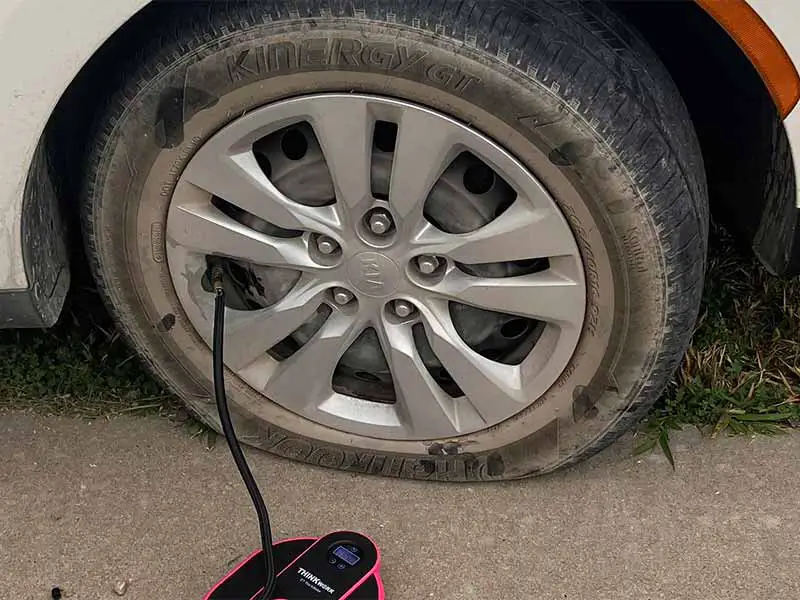Imagine this: You’re on your way out, keys jingling in your hand, only to find your trusty car slumped to one side. Yes, that tire you filled up just yesterday is flat again. It’s the automotive equivalent of a slow sigh, a deflating realization that you’ve got a slow leak on your hands. But don’t let it ruin your day, because we’ve got the guide to get you back up and rolling again!
Fix-A-Flat For Slow Leak?
Fix-A-Flat can be an effective temporary solution for a slow tire leak, usually lasting a few days to a week, depending on the severity of the leak.
However, for a lasting fix, you should seek professional repair or replace the affected tire.
In this article, we’ll unpack everything you need to know about managing a slow tire leak, from using Fix-A-Flat as a temporary solution, to understanding the risks of driving with a slow leak, and exploring the cost considerations of permanent solutions.
Let’s take a closer look.
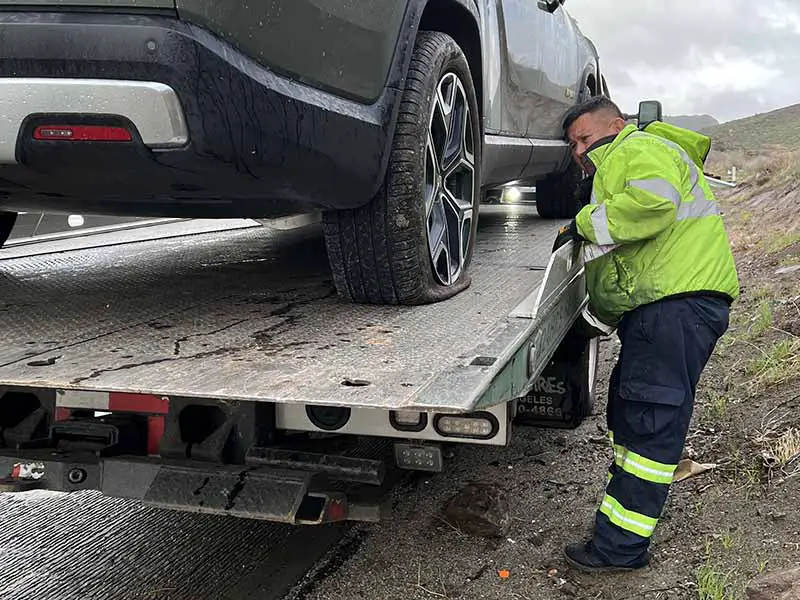
The Temporary Solution: Using Tire Sealants
Think of tire sealants kind of like a band-aid. They’re designed to plug small holes in your tire to stop it from leaking. Some of the most common tire sealants you might have heard of include Fix-A-Flat, Slime Tire Sealant, and others.
But remember, these are temporary fixes. While they’re great for getting you to a tire shop or home, they’re not designed to be a permanent solution. Relying on them for too long without getting your tire properly fixed can lead to more serious issues down the road.
Step-By-Step Guide: How to Use Fix-A-Flat
Using a tire sealant like Fix-A-Flat is a straightforward process. Here’s a step-by-step guide:
- Find the puncture: If you can, find the puncture causing the leak. This will be helpful in step 4.
- Shake the can: This will ensure the sealant is well mixed.
- Attach the hose: Connect the hose on the Fix-A-Flat can to the tire valve.
- Inflate the tire: As you inflate the tire with the Fix-A-Flat, try to position the can so the puncture is at the top of the tire.
- Drive immediately: This helps distribute the sealant inside the tire and seal the puncture.
- Check the tire: After a few miles, stop and check your tire. If it’s still losing air, you may need to repeat the process or seek professional help.
Answering Your Burning Questions
When it comes to using tire sealants, some common questions might be bugging you. Let’s tackle those:
- How long does Fix-A-Flat last for a slow leak? Typically, Fix-A-Flat should get you to the nearest tire shop or back home. It’s designed as a temporary solution and isn’t meant to last more than a few days.
- Can you plug a tire after using Fix-A-Flat? Yes, but you should let your tire repair professional know you’ve used it. Some of the sealant may need to be cleaned out before a proper repair can be made.
- How long can you drive on Fix-A-Flat? Again, it’s a temporary fix. While it might get you through a couple of days, it’s essential to get your tire properly repaired or replaced as soon as possible to avoid further damage or a potential blowout.
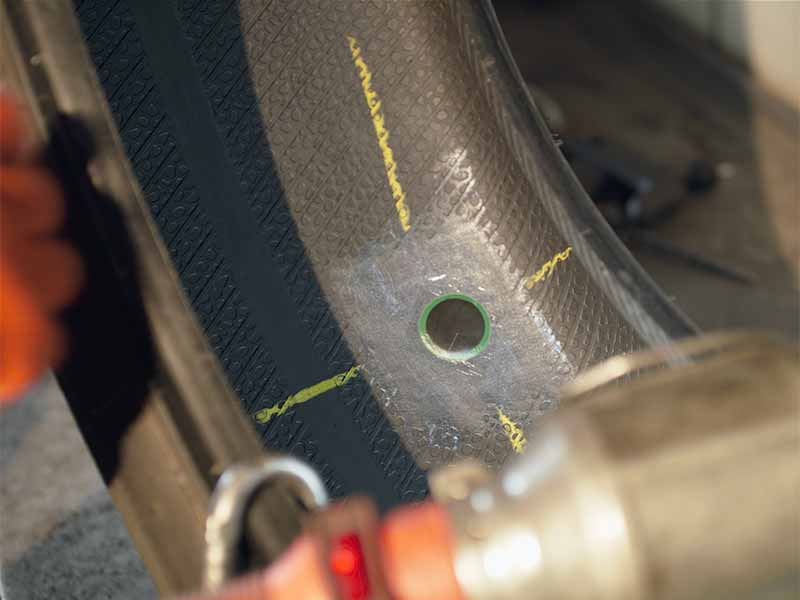
Permanent Solutions: Repair or Replace
Let’s Talk About Tire Repair
So, you’ve used your trusty Fix-A-Flat, made it home or to the tire shop, and now it’s time to consider a more permanent fix. Here’s the 411 on tire repair:
- Plug or Patch: If your tire has a puncture from a nail or screw, it might be repairable with a plug or patch. But remember, it’s important to have this done by a professional to ensure it’s safe.
- Leaky Valve: If the slow leak is due to a faulty tire valve, it might be possible to replace the valve and solve the problem.
- Damaged Rim: If the leak is due to a damaged rim, the rim may need to be repaired or replaced.
Remember, not all tire damage can be repaired. Sometimes, replacement is the safest and most cost-effective option.
When to Replace Your Tire
While we all love a good fix, sometimes replacement is the best option. If your tire has severe damage, a large puncture, or is leaking from the sidewall, it’s probably time to say goodbye and invest in a new tire. But hey, look at the bright side, a new tire means better safety and performance!

Can Of Fix-A-Flat
Fix-A-Flat Pros And Cons
Like most solutions, Fix-A-Flat comes with its own set of pros and cons. Understanding these can help you make an informed decision when dealing with a slow leak.
Pros of Using Fix-A-Flat
- Convenience: Fix-A-Flat is easy to use and doesn’t require any tools or special knowledge. Simply connect, inflate, and go!
- Speed: The whole process takes just a few minutes, which can be a lifesaver if you’re running late or stuck in a remote location.
- Temporary Solution: It can seal and inflate your tire, buying you time to get to a tire shop.
- Avoids Towing: In many cases, using Fix-A-Flat can get your car roadworthy enough to drive to a professional, avoiding the cost and hassle of a tow truck.
Cons of Using Fix-A-Flat
- Temporary Fix: It’s important to remember that Fix-A-Flat is a temporary solution. It’s not designed to permanently fix a leak, and driving on a tire sealed with Fix-A-Flat for an extended period can be unsafe.
- Potential Mess: The sealant can create a mess inside the tire, which can be tricky to clean out when you eventually repair or replace the tire.
- Can’t Fix Large Punctures or Sidewall Damage: Fix-A-Flat is designed to seal small punctures in the tread area of the tire. It won’t be effective for large punctures or damage to the sidewall.
- TPMS Interference: The sealant can sometimes interfere with your Tire Pressure Monitoring System (TPMS), leading to inaccurate readings.
Knowing these pros and cons can help you decide when it’s appropriate to use Fix-A-Flat and when it’s better to opt for other solutions. Remember, while Fix-A-Flat can be a real help in a bind, it’s not a substitute for a professional tire repair or replacement.
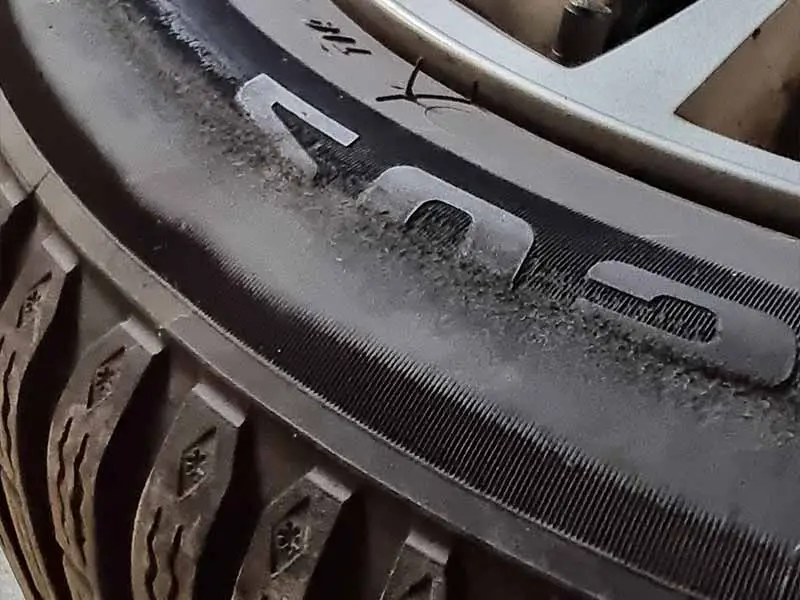
Risks of Driving on a Tire with a Slow Leak
Picture this: You’re cruising down the highway, jamming to your favorite songs, when suddenly – BOOM! Your tire blows out. Scary, right? Driving on a tire with a slow leak can lead to a tire blowout, which is not only frightening but can also be dangerous. Here’s why:
- Loss of Vehicle Control: A tire blowout can make it incredibly hard to control your vehicle, increasing the risk of an accident.
- Damage to Your Vehicle: The force of a blowout can damage other parts of your vehicle, like the undercarriage.
- Risk of Collision: If your tire blows out on a busy road or highway, there’s a higher risk of colliding with other vehicles.
The Shortcomings of Temporary Fixes and Tire Sealants
While tire sealants are great for a quick fix, they’re not perfect. Here are some things to keep in mind:
- Not a Permanent Solution: Tire sealants are designed to get you to a tire shop, not to permanently fix a slow leak.
- Potential Damage: Over-reliance on sealants without proper repair can potentially damage the tire and wheel.
- Uncertain Lifespan: While a sealant might stop a leak temporarily, there’s no guarantee how long it will hold.
The Impact on Run Flat Tires
Run flat tires are a special type of tire designed to keep working for a short distance even after they lose air. They sound cool, right? But a slow leak can still pose problems for these high-tech tires:
- Damage to the Tire: Driving on a run flat tire with low pressure for too long can damage the tire beyond repair.
- Limited Distance: Even with a slow leak, run flat tires are only designed to be driven for about 50 miles. After that, they need to be repaired or replaced.
- Risk of Blowout: Like regular tires, run flat tires are also at risk of a blowout if driven on with low pressure for too long.
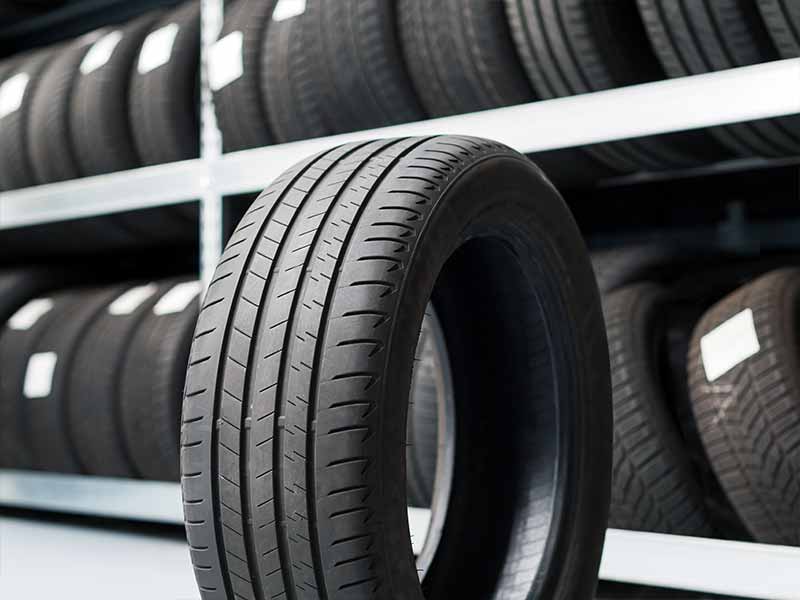
Cost Considerations of Fixing a Slow Leak
Money matters, and knowing what you’re likely to spend fixing a slow leak can help you plan and prevent any surprises. Let’s dive into the potential costs:
- Cost of Tire Sealants: A can of tire sealant like Fix-A-Flat or Slime Tire Sealant usually costs between $10 and $15. This can be a quick and cost-effective temporary fix.
- Professional Tire Repair: Having your tire professionally repaired at a tire shop typically costs between $15 and $40. This might include plugging or patching a puncture, or replacing a faulty tire valve.
- Tire Replacement: If your tire can’t be repaired and needs to be replaced, you could be looking at anywhere from $100 to $300 per tire, depending on the type and brand of tire you choose.
Consider the Tow Truck
Stuck on the side of the road with a flat and no spare tire? You might need a tow truck. The cost of a tow can vary significantly based on how far you need to go, but expect to pay between $75 and $125.
Weighing Your Options
Ultimately, the “best” fix for your slow leak will depend on your specific situation. Here are some things to consider:
- Extent of the Damage: If the damage to your tire is minimal, a simple plug or patch might be the most cost-effective solution.
- Age and Condition of Your Tire: If your tire is old or already worn out, it might make more sense to replace it rather than repair it.
- Safety: Remember, the cheapest option isn’t always the safest. Always consider your safety first when deciding how to deal with a slow leak.
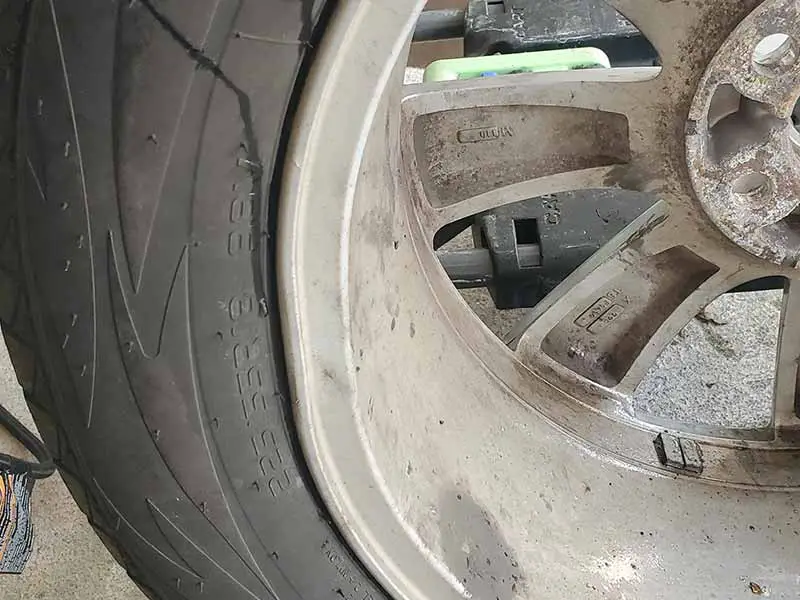
Causes and Signs of a Slow Leak
Sometimes, your tire might feel like that old, slow-leaking pool floatie you can’t seem to keep inflated. But unlike a pool floatie, a slow leak in your tire can be dangerous. Let’s take a peek at some of the most common causes:
- Punctured Tire: Just like stepping on a piece of glass can cause a small cut in your foot, running over a sharp object can puncture your tire. This could be a nail, screw, or any other sharp debris. But unlike your foot, a tire can’t heal itself – so it slowly leaks air.
- Faulty Tire Valve: Remember our tire gatekeeper? Well, sometimes, it doesn’t do its job perfectly. Dirt, damage, or even a loose valve cap can cause air to escape slowly from your tire.
- Damaged Tire Rim: That metal part your tire is hugging? It can get damaged too. If your tire rim is corroded or if it’s bent because you hit a curb (we’ve all been there), it can cause your tire to lose air slowly.
- Bead Leaks: The bead is where the tire meets the rim. Sometimes, air can escape from this area, especially if your tire isn’t fitted perfectly to the rim. This is known as a bead leak.
How Do I Know If I Have a Slow Leak?
Like a bad cold, a slow leak has symptoms. Here are some signs to watch out for:
- Low Tire Pressure Warning: If your TPMS light keeps turning on, even after you’ve inflated your tires, you might have a slow leak.
- Tire Looks Underinflated: If one of your tires looks a little more squished than the others when your car is parked, it could be slowly losing air.
- Frequent Need for Air: If you find yourself needing to inflate one tire more often than the others, it could be due to a slow leak.
- Unusual Vehicle Handling: If your vehicle pulls to one side while driving or if it doesn’t handle like it usually does, one of your tires could be losing air.

The Importance Of Correct Tire Pressure?
Tire pressure is kind of like the Goldilocks of car maintenance. It can’t be too high or too low; it has to be just right. Maintaining the proper tire pressure is crucial for your vehicle’s safety and performance. But what does tire pressure do exactly?
- Fuel Efficiency: Believe it or not, tire pressure plays a significant role in your vehicle’s gas mileage. Tires at the right pressure help your car move smoothly and efficiently, which saves you money at the gas pump.
- Tire Lifespan: Over time, incorrect tire pressure can cause your tires to wear unevenly. This can lead to faster wear and tear, forcing you to replace your tires sooner than expected.
- Safety: Proper tire pressure ensures better vehicle handling, reducing the risk of accidents. Plus, it helps prevent tire blowouts, which are downright dangerous.
Resources
Below are some links you may find helpful when learning about tires
Final Thoughts
Fix-A-Flat or other tire sealants can offer a useful temporary solution, buying you some time to get to a tire shop.
However, these temporary fixes are not long-term solutions. For that, you need a professional repair or possibly even a tire replacement. And while it might seem like an annoyance, dealing with a slow leak promptly can prevent bigger problems down the line, like a flat tire or blowout.
Good luck and happy motoring.
